CDSOT23-SM712 Tvs Diode Surface SOT-23-3 14V Clamp[FAQ]: Datasheet, Pinout, and Applications
TVS DIODE 7V/12V 14V/26V SOT23-3
The CDSOT23-SM712 device protects data ports from ESD, EFT, and Surge. This article is going to introduce pinout, applications, features, and more details about CDSOT23-SM712.
- Overview of CDSOT23-SM712
- CDSOT23-SM712 Features
- CDSOT23-SM712 Pinout
- CDSOT23-SM712 Dimensions
- CDSOT23-SM712 3D Model
- Specifications
- CDSOT23-SM712 Absolute Maximum Ratings
- CDSOT23-SM712 Electrical Characteristics
- Parts with Similar Specs
- CDSOT23-SM712 Applications
- CDSOT23-SM712 Packaging information
- CDSOT23-SM712 Manufacturer
- Datasheet PDF
- Popularity by Region
Overview of CDSOT23-SM712
The CDSOT23-SM712 device protects data ports from ESD, EFT, and Surge according to IEC 61000-4-2 (ESD), IEC 61000-4-4 (EFT), and IEC 61000-4-5 (Surge) standards. The Transient Voltage Suppressor Array comes with two TVS diodes, each with a Working Peak Reverse Voltage of 7 V or 12 V and a Minimum Breakdown Voltage of 7.5 V or 13.3 V. The SOT23 packed device will fit into the industry-standard SOT23 footprint without modification. The flat shape makes it easier to place equipment and reduces roll-away. Bourns® Chip Diodes meet JEDEC specifications and are simple to use.
CDSOT23-SM712 Features
RoHS compliant*
Working peak voltage 7 V or 12 V
ESD protection 30 kV max.
Surge protection
CDSOT23-SM712 Pinout

CDSOT23-SM712 Pinout
CDSOT23-SM712 Dimensions

CDSOT23-SM712 Dimensions
CDSOT23-SM712 3D Model

CDSOT23-SM712 Symbol

CDSOT23-SM712 Footprint

CDSOT23-SM712 3D Model
Specifications
- TypeParameter
- Factory Lead Time7 Weeks
- Contact Plating
Contact plating (finish) provides corrosion protection for base metals and optimizes the mechanical and electrical properties of the contact interfaces.
Tin - Mount
In electronic components, the term "Mount" typically refers to the method or process of physically attaching or fixing a component onto a circuit board or other electronic device. This can involve soldering, adhesive bonding, or other techniques to secure the component in place. The mounting process is crucial for ensuring proper electrical connections and mechanical stability within the electronic system. Different components may have specific mounting requirements based on their size, shape, and function, and manufacturers provide guidelines for proper mounting procedures to ensure optimal performance and reliability of the electronic device.
Surface Mount - Mounting Type
The "Mounting Type" in electronic components refers to the method used to attach or connect a component to a circuit board or other substrate, such as through-hole, surface-mount, or panel mount.
Surface Mount - Package / Case
refers to the protective housing that encases an electronic component, providing mechanical support, electrical connections, and thermal management.
TO-236-3, SC-59, SOT-23-3 - Number of Pins3
- Diode Element Material
The parameter "Diode Element Material" refers to the specific semiconductor material used in the construction of a diode. This material determines the electrical characteristics and performance of the diode, including its forward voltage drop, reverse breakdown voltage, and switching speed. Common diode element materials include silicon, germanium, and gallium arsenide, each offering different advantages for various applications. The choice of material impacts the diode's efficiency, thermal stability, and overall suitability for specific electronic circuits.
SILICON - Breakdown Voltage / V13.3V
- Number of Elements2
- Reverse Stand-off Voltage12V
- Operating Temperature
The operating temperature is the range of ambient temperature within which a power supply, or any other electrical equipment, operate in. This ranges from a minimum operating temperature, to a peak or maximum operating temperature, outside which, the power supply may fail.
-55°C~150°C TJ - Packaging
Semiconductor package is a carrier / shell used to contain and cover one or more semiconductor components or integrated circuits. The material of the shell can be metal, plastic, glass or ceramic.
Tape & Reel (TR) - Published2008
- JESD-609 Code
The "JESD-609 Code" in electronic components refers to a standardized marking code that indicates the lead-free solder composition and finish of electronic components for compliance with environmental regulations.
e3 - Pbfree Code
The "Pbfree Code" parameter in electronic components refers to the code or marking used to indicate that the component is lead-free. Lead (Pb) is a toxic substance that has been widely used in electronic components for many years, but due to environmental concerns, there has been a shift towards lead-free alternatives. The Pbfree Code helps manufacturers and users easily identify components that do not contain lead, ensuring compliance with regulations and promoting environmentally friendly practices. It is important to pay attention to the Pbfree Code when selecting electronic components to ensure they meet the necessary requirements for lead-free applications.
yes - Part Status
Parts can have many statuses as they progress through the configuration, analysis, review, and approval stages.
Active - Moisture Sensitivity Level (MSL)
Moisture Sensitivity Level (MSL) is a standardized rating that indicates the susceptibility of electronic components, particularly semiconductors, to moisture-induced damage during storage and the soldering process, defining the allowable exposure time to ambient conditions before they require special handling or baking to prevent failures
1 (Unlimited) - Number of Terminations3
- Termination
Termination in electronic components refers to the practice of matching the impedance of a circuit to prevent signal reflections and ensure maximum power transfer. It involves the use of resistors or other components at the end of transmission lines or connections. Proper termination is crucial in high-frequency applications to maintain signal integrity and reduce noise.
SMD/SMT - ECCN Code
An ECCN (Export Control Classification Number) is an alphanumeric code used by the U.S. Bureau of Industry and Security to identify and categorize electronic components and other dual-use items that may require an export license based on their technical characteristics and potential for military use.
EAR99 - TypeZener
- Applications
The parameter "Applications" in electronic components refers to the specific uses or functions for which a component is designed. It encompasses various fields such as consumer electronics, industrial automation, telecommunications, automotive, and medical devices. Understanding the applications helps in selecting the right components for a particular design based on performance, reliability, and compatibility requirements. This parameter also guides manufacturers in targeting their products to relevant markets and customer needs.
RS-485 - HTS Code
HTS (Harmonized Tariff Schedule) codes are product classification codes between 8-1 digits. The first six digits are an HS code, and the countries of import assign the subsequent digits to provide additional classification. U.S. HTS codes are 1 digits and are administered by the U.S. International Trade Commission.
8541.10.00.80 - Capacitance
Capacitance is a fundamental electrical property of electronic components that describes their ability to store electrical energy in the form of an electric field. It is measured in farads (F) and represents the ratio of the amount of electric charge stored on a component to the voltage across it. Capacitors are passive components that exhibit capacitance and are commonly used in electronic circuits for various purposes such as filtering, energy storage, timing, and coupling. Capacitance plays a crucial role in determining the behavior and performance of electronic systems by influencing factors like signal propagation, frequency response, and power consumption.
75pF - Max Power Dissipation
The maximum power that the MOSFET can dissipate continuously under the specified thermal conditions.
600W - Terminal Form
Occurring at or forming the end of a series, succession, or the like; closing; concluding.
GULL WING - Depth
In electronic components, "Depth" typically refers to the measurement of the distance from the front to the back of the component. It is an important parameter to consider when designing or selecting components for a project, as it determines how much space the component will occupy within a circuit or device. The depth of a component can impact the overall size and layout of the circuit board or enclosure in which it will be installed. It is usually specified in millimeters or inches and is crucial for ensuring proper fit and functionality within the intended application.
1.4mm - Base Part Number
The "Base Part Number" (BPN) in electronic components serves a similar purpose to the "Base Product Number." It refers to the primary identifier for a component that captures the essential characteristics shared by a group of similar components. The BPN provides a fundamental way to reference a family or series of components without specifying all the variations and specific details.
CDSOT23 - Pin Count
a count of all of the component leads (or pins)
3 - Working Voltage
The "Working Voltage" parameter in electronic components refers to the maximum voltage that the component can safely handle while operating within its specified parameters. It is a crucial specification to consider when designing or selecting components for a circuit to prevent damage or failure. Exceeding the working voltage can lead to breakdown or insulation failure, potentially causing the component to malfunction or even become permanently damaged. It is important to always operate electronic components within their specified working voltage range to ensure reliable and safe operation of the circuit.
12V - Polarity
In electronic components, polarity refers to the orientation or direction in which the component must be connected in a circuit to function properly. Components such as diodes, capacitors, and LEDs have polarity markings to indicate which terminal should be connected to the positive or negative side of the circuit. Connecting a component with incorrect polarity can lead to malfunction or damage. It is important to pay attention to polarity markings and follow the manufacturer's instructions to ensure proper operation of electronic components.
Bidirectional, Unidirectional - Number of Channels2
- Leakage Current
Leakage current is a term used in electronics to describe the small amount of current that flows through a component when it is supposed to be in a non-conductive state. This current can occur due to imperfections in the materials used to manufacture the component, as well as other factors such as temperature and voltage. Leakage current can lead to power loss, reduced efficiency, and potential reliability issues in electronic devices. It is important to consider and minimize leakage current in electronic components to ensure proper functionality and performance.
20μA - Element Configuration
The distribution of electrons of an atom or molecule (or other physical structure) in atomic or molecular orbitals.
Dual - Power Dissipation
the process by which an electronic or electrical device produces heat (energy loss or waste) as an undesirable derivative of its primary action.
400W - Power Line Protection
During fault, the only circuit breaker closest to the fault point should be tripped. The operating time of relay associated with protection of line should be as minimum as possible in order to prevent unnecessary tripping of circuit breakers associated with other healthy parts of power system.
No - Voltage - Breakdown (Min)
Voltage - Breakdown (Min) is a parameter used to specify the minimum voltage level at which an electronic component, such as a diode or capacitor, will break down and allow current to flow through it uncontrollably. This breakdown voltage is a critical characteristic that determines the maximum voltage the component can withstand before failing. It is important to ensure that the applied voltage does not exceed this minimum breakdown voltage to prevent damage to the component and maintain proper functionality. Manufacturers provide this specification to help engineers and designers select components that are suitable for their intended applications and operating conditions.
13.3V 7.5V - Current - Peak Pulse (10/1000μs)
The parameter "Current - Peak Pulse (10/1000μs)" in electronic components refers to the maximum current that a device can handle during a transient overvoltage event with a specific waveform, typically a 10/1000μs pulse. This parameter is important for surge protection devices such as transient voltage suppressors (TVS) and varistors, as it indicates the device's ability to divert excess current away from sensitive components and protect them from damage. A higher peak pulse current rating signifies better surge protection capability, making the component more suitable for applications exposed to high-voltage transients or lightning strikes. Designers should carefully consider this parameter when selecting surge protection components to ensure reliable operation and protection of their electronic circuits.
17A 8/20μs - Max Reverse Leakage Current
Max Reverse Leakage Current refers to the maximum amount of current that can flow through a semiconductor device, such as a diode or transistor, when it is reverse biased. This current is an important parameter as it indicates the level of unintended current that can flow when the device is not conducting in the forward direction. High values of reverse leakage current can lead to power loss, reduced efficiency, and may affect the performance and reliability of electronic circuits. It is particularly critical in applications where precise current control and low power consumption are necessary.
20μA - Voltage - Clamping (Max) @ Ipp
Voltage - Clamping (Max) @ Ipp refers to the maximum voltage that a component, such as a transient voltage suppressor or diode, can clamp when subjected to a specific peak current (Ipp). It indicates the upper limit of voltage that the component will allow to pass through, effectively protecting sensitive circuits from overvoltage conditions. This parameter is crucial for ensuring that devices are safeguarded against voltage spikes without being damaged. Designers use this specification to select appropriate components for overvoltage protection in their applications.
26V 14V - Clamping Voltage
Clamping voltage is a term used in electronic components, particularly in devices like diodes and transient voltage suppressors. It refers to the maximum voltage level at which the component can effectively limit or clamp the voltage across its terminals. When the voltage across the component exceeds the clamping voltage, the component conducts and effectively limits the voltage to that level, protecting the circuit from overvoltage conditions. Clamping voltage is an important parameter to consider when selecting components for applications where voltage spikes or surges may occur, as it determines the level at which the component will start to protect the circuit.
26V - Voltage - Reverse Standoff (Typ)
Voltage - Reverse Standoff (Typ) refers to the maximum reverse voltage that a semiconductor device, such as a diode or a transient voltage suppressor, can withstand without entering into breakdown. It is typically specified as a nominal value and indicates the voltage level at which the device transitions from its non-conducting state to a conducting state when reverse-biased. Exceeding this voltage can lead to permanent damage or failure of the component. This parameter is crucial for ensuring the safe operating limits of electronic circuits, particularly in protecting sensitive components from voltage spikes.
12V Max 7V Max - Peak Pulse Current
The peak pulse power rating of a TVS diode is defined as the instantaneous power dissipated by a device for a given pulse condition, and is a measure of the power that is dissipated in the TVS junction during a given transient event.
17A - Max Surge Current
Surge current is a peak non repetitive current. Maximum (peak or surge) forward current = IFSM or if(surge), the maximum peak amount of current the diode is able to conduct in forward bias mode.
30A - Peak Pulse Power
Peak Pulse Power is a parameter used to specify the maximum amount of power that an electronic component can handle during a transient event, such as a surge or spike in voltage or current. It indicates the maximum power dissipation capability of the component for a short duration. This parameter is important for protecting electronic circuits from damage caused by sudden high-energy events. Peak Pulse Power is typically expressed in watts and is crucial for selecting components that can withstand transient overloads without failing. It helps ensure the reliability and longevity of electronic systems in various applications.
400W - Direction
In electronic components, the parameter "Direction" refers to the orientation or alignment in which the component is designed to operate effectively. This parameter is particularly important for components such as diodes, transistors, and capacitors, which have specific polarity or orientation requirements for proper functionality. For example, diodes allow current flow in one direction only, so their direction parameter indicates the correct orientation for current flow. Similarly, polarized capacitors have a positive and negative terminal, requiring proper alignment for correct operation. Understanding and adhering to the direction parameter is crucial for ensuring the reliable and efficient performance of electronic components in a circuit.
Bidirectional - Test Current
Test Current refers to a specified amount of electrical current applied to an electronic component during testing to evaluate its performance and characteristics. This current is typically defined by manufacturers to ensure that the component operates within its designed parameters. By measuring how the component reacts to this test current, engineers can determine its reliability, efficiency, and suitability for specific applications.
1mA - Rep Pk Reverse Voltage-Max
Rep Pk Reverse Voltage-Max refers to the maximum reverse voltage that an electronic component, such as a diode, can withstand during a specified period of time without failing. This parameter is crucial in determining the safe operating limits of components in circuits where reverse voltage conditions may occur. Exceeding this value can lead to breakdown or permanent damage to the component. It is typically expressed in volts and is a key specification in signal and power applications.
7V - Capacitance @ Frequency
Capacitance @ Frequency refers to the value of capacitance that a capacitor exhibits when subjected to an alternating current (AC) signal at a specific frequency. This parameter highlights how the capacitor's behavior changes with frequency, as capacitance can vary due to effects like equivalent series resistance (ESR) and loss factors. Typically measured in microfarads (µF) or picofarads (pF), this value is crucial for applications involving signal coupling, filtering, and timing where AC signals are prevalent. Understanding capacitance at different frequencies helps in selecting the right capacitor for specific circuit functions.
75pF @ 1MHz - Reverse Breakdown Voltage
Reverse Breakdown Voltage is the maximum reverse voltage a semiconductor device can withstand before it starts to conduct heavily in the reverse direction. It is a critical parameter in diodes and other components, indicating the threshold at which the material's insulating properties fail. Beyond this voltage, the device may enter a breakdown region, leading to potential damage if not properly managed. This parameter is essential for ensuring safe operation and reliability in electronic circuits.
13.3V - Max Breakdown Voltage
The "Max Breakdown Voltage" of an electronic component refers to the maximum voltage that the component can withstand across its terminals before it breaks down and allows current to flow uncontrollably. This parameter is crucial in determining the operating limits and safety margins of the component in a circuit. Exceeding the maximum breakdown voltage can lead to permanent damage or failure of the component. It is typically specified by the manufacturer in datasheets to guide engineers and designers in selecting the appropriate components for their applications.
13.3V - ESD Protection
ESD protection, or Electrostatic Discharge protection, is a feature in electronic components designed to prevent damage caused by sudden electrostatic discharges. These discharges can occur when a person or object with an electric charge comes into contact with a sensitive electronic component, leading to a rapid flow of static electricity that can damage or destroy the component. ESD protection mechanisms in electronic components typically involve the use of special materials or circuitry that can safely dissipate or divert the excess charge away from the sensitive components, thus safeguarding the device from potential harm. Implementing effective ESD protection is crucial in ensuring the reliability and longevity of electronic devices, especially in environments where static electricity buildup is common, such as in manufacturing facilities or areas with low humidity.
Yes - Height1.17mm
- Length3.04mm
- Width1.397mm
- REACH SVHC
The parameter "REACH SVHC" in electronic components refers to the compliance with the Registration, Evaluation, Authorization, and Restriction of Chemicals (REACH) regulation regarding Substances of Very High Concern (SVHC). SVHCs are substances that may have serious effects on human health or the environment, and their use is regulated under REACH to ensure their safe handling and minimize their impact.Manufacturers of electronic components need to declare if their products contain any SVHCs above a certain threshold concentration and provide information on the safe use of these substances. This information allows customers to make informed decisions about the potential risks associated with using the components and take appropriate measures to mitigate any hazards.Ensuring compliance with REACH SVHC requirements is essential for electronics manufacturers to meet regulatory standards, protect human health and the environment, and maintain transparency in their supply chain. It also demonstrates a commitment to sustainability and responsible manufacturing practices in the electronics industry.
No SVHC - RoHS Status
RoHS means “Restriction of Certain Hazardous Substances” in the “Hazardous Substances Directive” in electrical and electronic equipment.
ROHS3 Compliant
CDSOT23-SM712 Absolute Maximum Ratings
| Parameter | Symbol | Value | Unit |
| Peak Pulse Power (tp= 8/20 μs)1 | PPK | 400 | W |
| Peak Pulse Current (8/20 μs) | IPP | 17 | A |
| Storage Temperature | TSTG | -55 to +150 | ºC |
| Operating Temperature | TOPR | -55 to +150 | ºC |
CDSOT23-SM712 Electrical Characteristics
| Parameter | Symbol | Value | Unit |
| Minimum Breakdown Voltage @ 1 mA Pin 3-1 and Pin 3-2 Pin 1-3 and Pin 2-3 | VBR | 7.5 13.3 | V |
| Maximum Working Peak Voltage Pin 3-1 and Pin 3-2 Pin 1-3 and Pin 2-3 | VWM | 7.0 12.0 | V |
| Maximum Leakage Current @ VWM Pin 3-1 and Pin 3-2 Pin 1-3 and Pin 2-3 | ID | 20.0 1.0 | μA |
| Maximum Clamping Voltage @ IP = 1 A Pin 3-1 and Pin 3-2 Pin 1-3 and Pin 2-3 | VC | 11 19 | V |
| Maximum Clamping Voltage @ IP = 5 A Pin 3-1 and Pin 3-2 Pin 1-3 and Pin 2-3 | VC | 12 20 | V |
| Maximum Clamping Voltage @ IPP = 17 A Pin 3-1 and Pin 3-2 Pin 1-3 and Pin 2-3 | VC | 14 26 | V |
| Typical Junction Capacitance @ 0 V, 1 MHz (Pin 3-1 and Pin 3-2) & (Pin 1-3 and Pin 2-3) | CD | 75 | pF |
| ESD Protection (per IEC 61000-4-2) Contact - Min. Contact - Max. Air - Min. Air - Max. | ESD | ±8 ±30 ±15 ±30 | kV |
Parts with Similar Specs
- ImagePart NumberManufacturerPolarityBreakdown VoltageMax Breakdown VoltageClamping VoltagePeak Pulse PowerPeak Pulse CurrentRoHS StatusMax Reverse Leakage CurrentView Compare
CDSOT23-SM712
Bidirectional, Unidirectional
13.3 V
13.3 V
26 V
400 W
17 A
ROHS3 Compliant
20 μA
Bidirectional, Unidirectional
6.1 V
7.2 V
21.2 V
400 W
15 A
ROHS3 Compliant
20 μA
-
6.1 V
7.2 V
11.35 V
400 W
15 A
ROHS3 Compliant
20 μA
Bidirectional, Unidirectional
6.1 V
7.2 V
11.35 V
300 W
18 A
ROHS3 Compliant
20 μA
UNIDIRECTIONAL
-
-
-
-
-
ROHS3 Compliant
20 μA
CDSOT23-SM712 Applications
Wireless systems
Network protection
Portable electronics
RS-485 port protection
CDSOT23-SM712 Packaging information

CDSOT23-SM712 Packaging information
CDSOT23-SM712 Manufacturer
Since its founding in 1947 by Marlan and Rosemary Bourns, Bourns, Inc. has been a leader in the electronics industry in the design, manufacture, and sale of electronic components and integrated solutions. Bourns focuses on product development in high-growth markets like computers, telecommunications, automobiles, and portable electronics as an industry innovator. With the introduction of the Trimpot® line in 1952, Bourns established a benchmark for the quality, value, and innovation of its products and services early in the Company's history. This was the first patented trimming potentiometer in the world. Bourns' commitment to excellence means that its products and services are continually improved to meet the needs of consumers all over the world. Bourns' concept is based on providing high-quality products, consistent delivery, and the best overall value to its global clients.
Datasheet PDF
- Datasheets :
- PCN Design/Specification :
- PCN Assembly/Origin :
- ConflictMineralStatement :
- Mfg CAD Models :
Popularity by Region
How many pins of CDSOT23-SM712?
3 pins.
Whta’s the operating temperature of CDSOT23-SM712?
-55°C~150°C.
What’ the working voltage of CDSOT23-SM712?
12V.
What’s the packaging way of CDSOT23-SM712?
Tape & Reel.
 Microchip PIC16F1527IMR: In-Depth Overview of Features and Applications
Microchip PIC16F1527IMR: In-Depth Overview of Features and Applications29 February 2024137
![LM741 Op Amp: Datasheet, Pinout, Applications, Equivalent , LM741 vs LM358[FAQ+Video]](https://res.utmel.com/Images/Article/982185fd-9ad4-49d4-a815-4b79ef0651a6.jpg) LM741 Op Amp: Datasheet, Pinout, Applications, Equivalent , LM741 vs LM358[FAQ+Video]
LM741 Op Amp: Datasheet, Pinout, Applications, Equivalent , LM741 vs LM358[FAQ+Video]18 April 202219747
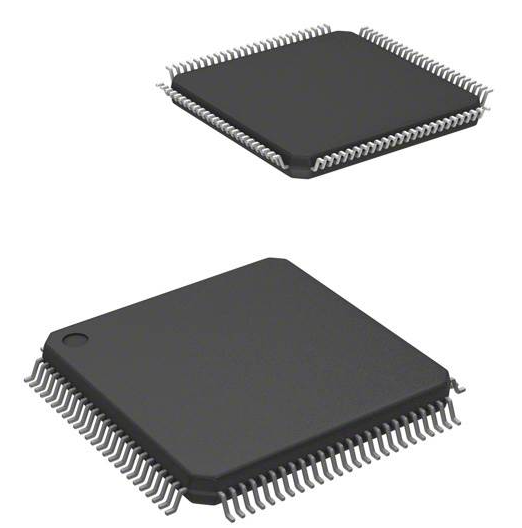 LPC1768FBD100: Overview, Features, and Applications
LPC1768FBD100: Overview, Features, and Applications12 December 2023579
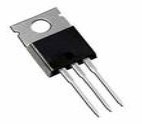 IRFZ44N Power MOSFET: Uses, Price and Application
IRFZ44N Power MOSFET: Uses, Price and Application27 August 202121530
 CD4051BM Analog Switch: Pinout, CAD Model and Specification
CD4051BM Analog Switch: Pinout, CAD Model and Specification14 August 20242976
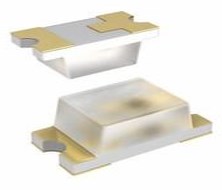 LTST-C191KRKT SMD LED: Circuit, Pinout, and Datasheet
LTST-C191KRKT SMD LED: Circuit, Pinout, and Datasheet08 March 20221750
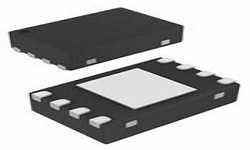 W25Q256JVEIQ IC: Features, Applications and Datasheet
W25Q256JVEIQ IC: Features, Applications and Datasheet01 December 20231586
 IRF640 vs IRF640N: Datasheet, Specifications, and FAQ
IRF640 vs IRF640N: Datasheet, Specifications, and FAQ05 November 20247535
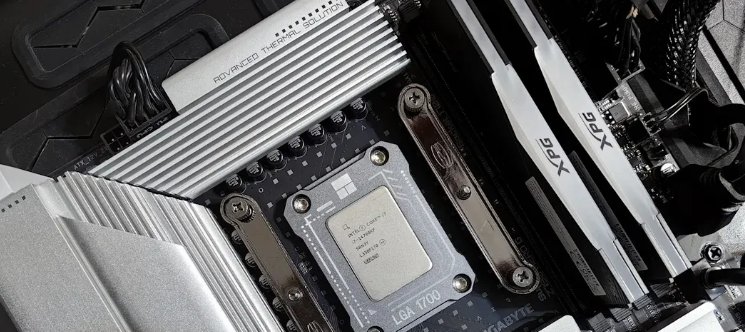 Comparing Heat Sink Types for Modern Applications
Comparing Heat Sink Types for Modern Applications19 July 20251009
 Yahoo Discontinues Services in Mainland China
Yahoo Discontinues Services in Mainland China13 November 2023799
 The Era of Business Globalization: Chinese Founders Aim to Conquer the World
The Era of Business Globalization: Chinese Founders Aim to Conquer the World30 May 20225444
 Constructing Hybrid Photovoltaics from Amorphous Silicon and Hybrid Semiconductor Nanocrystals
Constructing Hybrid Photovoltaics from Amorphous Silicon and Hybrid Semiconductor Nanocrystals24 October 20221484
 Exploring the Advancements in Storage Technologies and Grid Architecture of Electric Vehicle Charging Systems
Exploring the Advancements in Storage Technologies and Grid Architecture of Electric Vehicle Charging Systems18 October 20232057
 Chip Packaging Lead Time Has Grown to 50 Weeks
Chip Packaging Lead Time Has Grown to 50 Weeks07 April 20224027
 Hall Effect: Definition, Principle, Measurement Methods
Hall Effect: Definition, Principle, Measurement Methods08 November 20228301
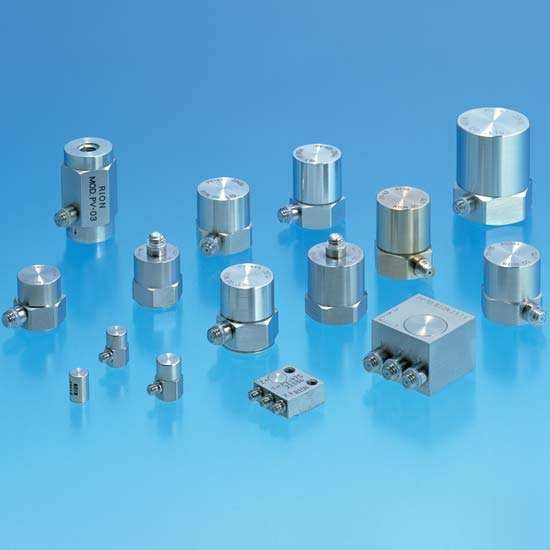 What is a Vibration Sensor?
What is a Vibration Sensor?24 October 20252721
Bourns Inc.
In Stock: 18862
United States
China
Canada
Japan
Russia
Germany
United Kingdom
Singapore
Italy
Hong Kong(China)
Taiwan(China)
France
Korea
Mexico
Netherlands
Malaysia
Austria
Spain
Switzerland
Poland
Thailand
Vietnam
India
United Arab Emirates
Afghanistan
Åland Islands
Albania
Algeria
American Samoa
Andorra
Angola
Anguilla
Antigua & Barbuda
Argentina
Armenia
Aruba
Australia
Azerbaijan
Bahamas
Bahrain
Bangladesh
Barbados
Belarus
Belgium
Belize
Benin
Bermuda
Bhutan
Bolivia
Bonaire, Sint Eustatius and Saba
Bosnia & Herzegovina
Botswana
Brazil
British Indian Ocean Territory
British Virgin Islands
Brunei
Bulgaria
Burkina Faso
Burundi
Cabo Verde
Cambodia
Cameroon
Cayman Islands
Central African Republic
Chad
Chile
Christmas Island
Cocos (Keeling) Islands
Colombia
Comoros
Congo
Congo (DRC)
Cook Islands
Costa Rica
Côte d’Ivoire
Croatia
Cuba
Curaçao
Cyprus
Czechia
Denmark
Djibouti
Dominica
Dominican Republic
Ecuador
Egypt
El Salvador
Equatorial Guinea
Eritrea
Estonia
Eswatini
Ethiopia
Falkland Islands
Faroe Islands
Fiji
Finland
French Guiana
French Polynesia
Gabon
Gambia
Georgia
Ghana
Gibraltar
Greece
Greenland
Grenada
Guadeloupe
Guam
Guatemala
Guernsey
Guinea
Guinea-Bissau
Guyana
Haiti
Honduras
Hungary
Iceland
Indonesia
Iran
Iraq
Ireland
Isle of Man
Israel
Jamaica
Jersey
Jordan
Kazakhstan
Kenya
Kiribati
Kosovo
Kuwait
Kyrgyzstan
Laos
Latvia
Lebanon
Lesotho
Liberia
Libya
Liechtenstein
Lithuania
Luxembourg
Macao(China)
Madagascar
Malawi
Maldives
Mali
Malta
Marshall Islands
Martinique
Mauritania
Mauritius
Mayotte
Micronesia
Moldova
Monaco
Mongolia
Montenegro
Montserrat
Morocco
Mozambique
Myanmar
Namibia
Nauru
Nepal
New Caledonia
New Zealand
Nicaragua
Niger
Nigeria
Niue
Norfolk Island
North Korea
North Macedonia
Northern Mariana Islands
Norway
Oman
Pakistan
Palau
Palestinian Authority
Panama
Papua New Guinea
Paraguay
Peru
Philippines
Pitcairn Islands
Portugal
Puerto Rico
Qatar
Réunion
Romania
Rwanda
Samoa
San Marino
São Tomé & Príncipe
Saudi Arabia
Senegal
Serbia
Seychelles
Sierra Leone
Sint Maarten
Slovakia
Slovenia
Solomon Islands
Somalia
South Africa
South Sudan
Sri Lanka
St Helena, Ascension, Tristan da Cunha
St. Barthélemy
St. Kitts & Nevis
St. Lucia
St. Martin
St. Pierre & Miquelon
St. Vincent & Grenadines
Sudan
Suriname
Svalbard & Jan Mayen
Sweden
Syria
Tajikistan
Tanzania
Timor-Leste
Togo
Tokelau
Tonga
Trinidad & Tobago
Tunisia
Turkey
Turkmenistan
Turks & Caicos Islands
Tuvalu
U.S. Outlying Islands
U.S. Virgin Islands
Uganda
Ukraine
Uruguay
Uzbekistan
Vanuatu
Vatican City
Venezuela
Wallis & Futuna
Yemen
Zambia
Zimbabwe


















